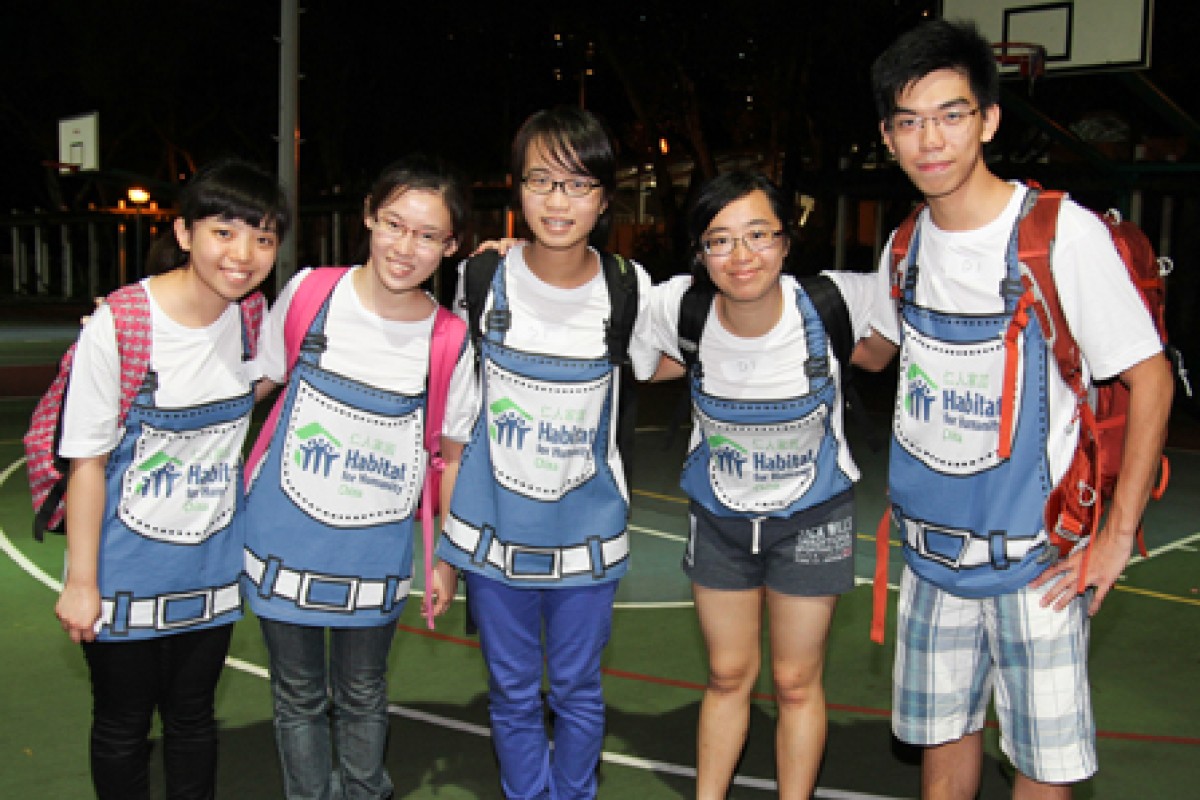
Our junior reporters discovered going without shelter is no child's play
 From left: Junior reporters Winnie Lee, Crystal Tai, Wendy Ki, Lois Lee and Stanley Lam.
From left: Junior reporters Winnie Lee, Crystal Tai, Wendy Ki, Lois Lee and Stanley Lam.Non-profit group Habitat for Humanity China organised a camp, "Under No Roof", where people can experience what it's like living without a home. Our junior reporters visited the camp. Here is what they did and learned ...
The camp was held at Ma On Shan YMCA Wu Kai Sha Youth Village, where we would experience homelessness for 16 hours. We had no shelter and had to build our own "homes" using simple materials we could find: bamboo sticks, pieces of cardboard, plastic bags.
The idea was for us to live like homeless people for a day. We came to appreciate the hardships they face on a daily basis.
Stanley Lam Tsz-kin
The junior reporters collect materials to build temporary shelters
"If you believe you are in a survival situation, building a shelter is the first and foremost thing to do," an instructor told us at the camp.
Most of us would think that the most important thing for homeless people is to have food and water, or even a positive attitude. But often it's having a shelter that matters most. Without one, you could simply die from exposure.
We learned all that from personal experience at the camp. While we were building our shelter, it rained so heavily that we had to seek shelter in a nearby indoor basketball court.
I shudder to think what would have happened if we had to stay outside. We would have got soaked, and probably fallen ill before long!
Crystal Tai
What do you do when a blackout occurs due to an earthquake? Thankfully, one of the instructors taught us how to escape safely - in complete darkness. "We should fully utilise our other senses and our limbs instead of the eyes," the instructor said.
When looking for a way out, we should never use our open palms; we should use the back of our hands instead. This is to minimise damage from electric shocks; if you touch an exposed electrical wire with your fingertips or open palm, the shock will stimulate the muscles in your hand, causing it to close into a fist. This will make it extremely difficult to re-open your hand.
Winnie Lee Wing-yee
We were divided into teams and had to transport materials. We had to do so with the least amount of effort. We thought we did fairly well, but we were disappointed to hear from the instructor that we had not done too well.
The instructor told us that if we used both of our hands to carry resources during a disaster, we would have no free hands left to save ourselves in an emergency.
Keeping a hand free for emergencies is a crucial survival skill!
Lois Lee Nga-ting
Young Post organises regular activities for our junior reporters. If you wish to join, send your name, age, school and contact details to [email protected] with "jun rep application" in the subject field